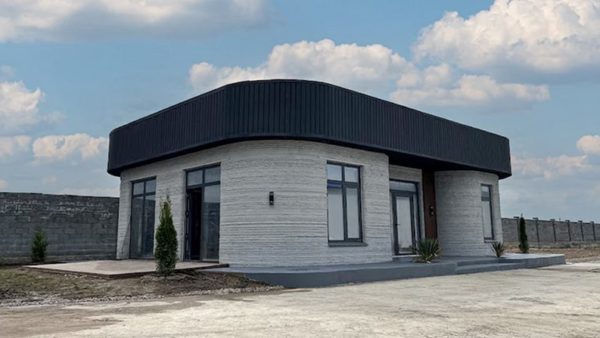Central Asia’s first 3D-printed house has been completed in Almaty, southern Kazakhstan. The 100 sq m building is made from extra-strong concrete that will able to withstand earthquakes measuring up to seven on the Richter scale.
The structure was built by BM Partners built using a 3D printer made by Danish company Cobod.
The work took two months to complete, with the walls requiring only five days. Following their printing, a seismic beam belt was installed to ensure the building was in line with local building codes.
The extra-strong concrete was made from locally sourced cement, sand and gravel to a formula developed by Cobod and Mexican cement-maker Cemex. It has a compression strength of almost 60 MPa, whereas conventional brick and stone construction used in Kazakhstan has a 7-10 MPa strength.
The house also contains expanded polystyrene concrete to insulate against Kazakhstan’s large temperature variations.
Henrik Lund-Nielsen, Cobod International’s founder, said: “This project once again demonstrates that 3D printed buildings are built to last, also when made in earthquake high-risk areas.”
Further Reading:
The post Central Asia’s first printed house can withstand earthquakes appeared first on Global Construction Review.


